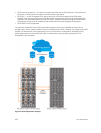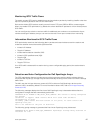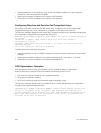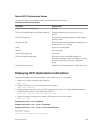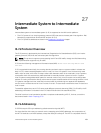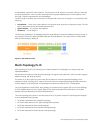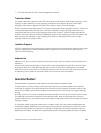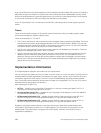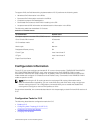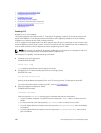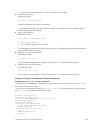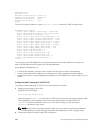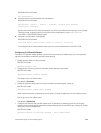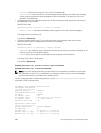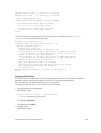by an active RPM have been downloaded into the forwarding information base (FIB) on the line cards (the
data plane) and are still resident. For packets that have existing FIB/content addressable memory (CAM)
entries, forwarding between ingress and egress ports can continue uninterrupted while the control plane
IS-IS process comes back to full functionality and rebuilds its routing tables.
A new TLV (the Restart TLV) is introduced in the IIH PDUs, indicating that the router supports graceful
restart.
Timers
Three timers are used to support IS-IS graceful restart functionality. After you enable graceful restart,
these timers manage the graceful restart process.
There are three times, T1, T2, and T3.
• The T1 timer specifies the wait time before unacknowledged restart requests are generated. This is the
interval before the system sends a Restart Request (an IIH with the RR bit set in Restart TLV) until the
complete sequence number PDU (CSNP) is received from the helping router. You can set the duration
to a specific amount of time (seconds) or a number of attempts.
• The T2 timer is the maximum time that the system waits for LSP database synchronization. This timer
applies to the database type (level-1, level-2, or both).
• The T3 timer sets the overall wait time after which the router determines that it has failed to achieve
database synchronization (by setting the overload bit in its own LSP). You can base this timer on
adjacency settings with the value derived from adjacent routers that are engaged in graceful restart
recovery (the minimum of all the Remaining Time values advertised by the neighbors) or by setting a
specific amount of time manually.
Implementation Information
IS-IS implementation supports one instance of IS-IS and six areas.
You can configure the system as a Level 1 router, a Level 2 router, or a Level 1-2 router. For IPv6, the IPv4
implementation has been expanded to include two new type, length, values (TLVs) in the PDU that carry
information required for IPv6 routing. The new TLVs are IPv6 Reachability and IPv6 Interface Address.
Also, a new IPv6 protocol identifier has also been included in the supported TLVs. The new TLVs use the
extended metrics and up/down bit semantics.
Multi-topology IS-IS adds TLVs:
• MT TLV — contains one or more Multi-Topology IDs in which the router participates. This TLV is
included in IIH and the first fragment of an LSP.
• MT Intermediate Systems TLV — appears for every topology a node supports. An MT ID is added to
the extended IS reachability TLV type 22.
• MT Reachable IPv4 Prefixes TLV — appears for each IPv4 an IS announces for a given MT ID. Its
structure is aligned with the extended IS Reachability TLV Type 236 and it adds an MT ID.
• MT Reachable IPv6 Prefixes TLV — appears for each IPv6 an IS announces for a given MT ID. Its
structure is aligned with the extended IS Reachability TLV Type 236 and add an MT ID.
By default, the system supports dynamic host name exchange to assist with troubleshooting and
configuration. By assigning a name to an IS-IS NET address, you can track IS-IS information on that
address easier. The system does not support ISO CLNS routing; however, the ISO NET format is
supported for addressing.
484
Intermediate System to Intermediate System



